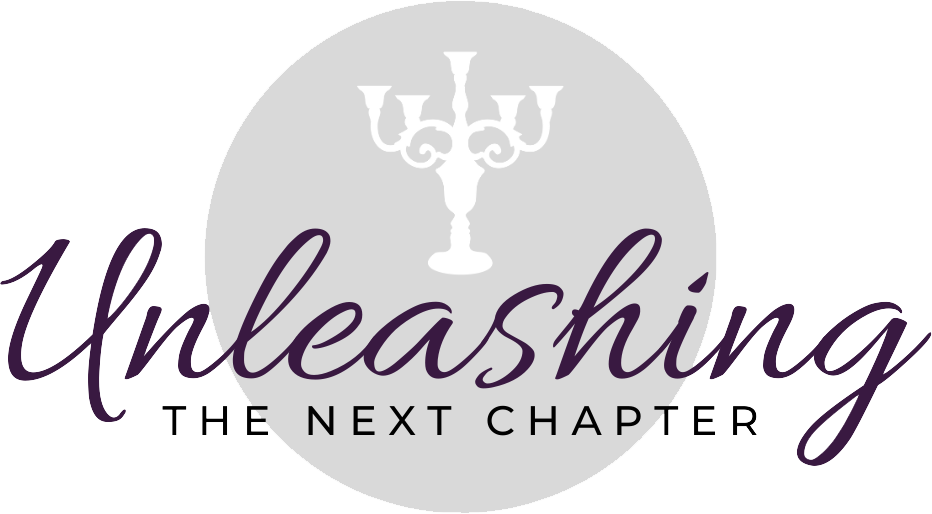The Fifth Annual Migraine World Summit is winding down. This is my fifth year to participate online, and once again I have come away inspired, encouraged, and armed with updated information from leading doctors, researchers, and advocates. Comedian and writer, Whitney Cummings–author of I’m Fine… and other Lies, and swimmer and four-time Olympian, Amanda Beard–author of In the Water They Can’t See You Cry, joined experts the first night to kick off the ten-day summit. Both women are migraineurs who have struggled coming to terms with migraine, and have learned a lot of coping strategies to allow them to work their way to the tops of their professions.
Many of you know my story, so I won’t take time to tell it here. If you are new, here are some of my past migraine-related blog posts:
- My Contribution to the 12th Annual “Headache on the Hill”
- #TrueMigrainePose
- Life and Blogging on the Disabled List
- 5 Keys to Living with Migraine
- It’s a Migraine Hangover kind of day…
Many people who don’t have migraine, and perhaps many who do, don’t realize how debilitating and how serious a disease this is for a few reasons: 1) there are at least seven to ten different types of migraine, 2) there are four distinct phases of a migraine attack, and depending on the type of migraine some or all phases may be present, 3) migraine exists on a continuum or spectrum, so some with the disease may experience mild episodic attacks while others may live with chronic debilitating and frequent attacks, and 4) those of us living with migraine fake being healthy and do amazing things to compensate for this disability. Number 4 is what I want to talk about today.
If you Google “living with migraine,” “migraine management,” or “compensating for migraine disease” you will find more research (some fabulous, some outdated), opinions, doctors, migraine warriors, and old wives’ tales. This is one of the reasons the Migraine World Summit is so important. It brings together the leaders in all facets of migraine research and treatment, many of whom are #MigraineWarriors themselves, to learn what is now known, who to talk to about what, how to manage the disease, and where to find community and advocacy opportunities. Migraine has been known and written about since the ancient Egyptian hieroglyphics. but sadly has been the butt of many jokes for about 200 years since a French doctor spread some bad information.
Migraine Warriors are NOT seeking attention, trying to get out of work, hysterical, making it up, lazy, or undisciplined. Migraine affects people of all ages, socioeconomic backgrounds, gender, and ethnicity. Although, migraine affects more women than men, it is not just a woman’s hormonal problem. And, here’s a big misunderstanding: Migraine is NOT just a bad headache. Migraine is a systemic disease that affects the entire body, and headache is just one symptom. If you have a really bad headache, and no other symptoms, then you have a headache. If you have the four phases, which may include things like heightened sensitivity to sound, smell, light, and touch, nausea, vomiting, diarrhea, brain fog, difficulty speaking/aphasia, tingling on one side of the body, visual disturbances, Alice in Wonderland syndrome, vertigo, dizziness, weakness, fatigue, and/or insomnia, you probably have migraine and should see your doctor. Untreated migraine can get worse, and Migraine with Aura is a risk factor for stroke (it was my main risk factor prior to surviving five strokes before my 40th birthday).
So much has been learned about migraine in the last decade, including that it is genetic, and at least 64 separate genes are involved which is why there is so much variety in how migraine affects each migraineur. Until recently, the only medications prescribed for migraine were actually developed for other diseases and accidentally discovered after the fact that they maybe kinda’ helped with migraine. The new anti-CGRP drugs released in 2018 are the first to specifically target the genetic makeup of migraine, and are taken as a preventative. (By the way, I have been one of the grateful recipients of the third generation of that drug, Emgality, for the last year, and it has given me about 50% more control over my chronic migraine attacks). In the past few months, two new classes of migraine abortive drugs have been approved and released in the US, ditans and gepants. (My doctor just prescribed Reyvow, a ditan, for me three days ago, and I’m anxious to see if it will work for me.)
In an effort to shed some light on a situation where most sufferers are literally hiding in the dark, let me list some ways migraine warriors compensate for this disease so that we look normal and fake being healthy, and consequently may add to the confusion:
- Sun glasses and tinted glasses… no we’re not trying to look cool, but the majority of migraineurs are photosensitive or photophobic most of the time, and find light to be a migraine trigger, as well it being a symptom of the disease. Those who have migraine with aura often see flashing lights inside their head right before the attack hits. Or a camera flash, flickering florescent light, or strobe lights on traffic signals or emergency vehicles can trigger a migraine attack.
- Dietary restrictions… many migraineurs find that eating certain foods will trigger attacks, but this is confusing because each person has different triggers, and researchers are also learning that some foods that were once considered a trigger are actually cravings that are prodromal/pre-migraine warnings. For instance, some find that chocolate is a food that will trigger an attack, while others find they crave chocolate in the hours before the attack, and the attack will come whether they eat it or not. I know that when I start having crazy uncontrollable cravings for bread, crackers, sweets, and other simple carbs with no nutritional value, I am within twelve hours of an attack.
- Sleep… sleep is pretty much the only thing that will break a migraine attack, so when we are sick, we must sleep; but, because of the various symptoms, that’s almost impossible. Additionally, a consistent sleep pattern of going to bed and waking up at the same time, every single day, is vital for managing migraine. This is why many of us end up with attacks on vacation, or during the holidays, or while traveling. Whitney Cummings spoke about how she travels with a “migraine case” that includes her pillow, duck tape to cover all the problematic lights in hotel rooms (like the little flashing one on smoke detectors or the motion sensitive LED light near the floor by the bed), ear plugs, asking for the quietest room, and more.
- Please stop with the perfumes… you may not have noticed, but many migraine warriors use unscented everything they can, and avoid perfume counters, Bed Bath & Body stores and products, and even scented candles. We ask our family, friends, and co-workers to avoid these things, too. Concerts, church services, and other big gatherings in close quarters are problematic, too. Why? Many migraineurs are triggered by not only some smells, but combinations of smells can be overwhelming, and lead quickly to nausea and vomiting. To compensate, I chew ginger or cinnamon gum, or put a touch of peppermint essential oil under my nose. Sometimes that helps, sometimes not enough.
- Wearing earbuds or headphones… you may be surprised to know that many of us wear these things in public, not so much because we are music lovers (although I am), but to cancel out other noises that might trigger an attack. Many of us are hypersensitive to sound and have very acute hearing, either all the time, prior, or during an attack. Loud pounding base sounds, high sopranos, and poorly adjusted amplification can all trigger me. I often wear earplugs in church, and can still hear every word. If I am without my earplugs, I will put in my earbuds to prevent an attack. During an attack, I often listen to binaural beat technology (BBT) to help manage the attack. Others use music, ASMR, nature sounds, or white noise.
- Must exercise/can’t exercise… one would think since many migraine warriors seem overweight, out of shape, and lethargic that suggesting exercise would be obvious. And it is. But while a large number of us religiously use exercise as a way to manage the disease and the side effects of the medications (yep, many migraine meds CAUSE the weight gain, fatigue, and food cravings), for just as many migraineurs, exercise is a trigger that will cause an attack. There is a fine line for all with migraine, as we know exercise will help our overall health, correct some of the sleep issues we have, and control weight, but when the thing that helps you is also the thing that hurts you… oy vey! So, please don’t suggest we just exercise more and watch what we eat because more than likely, we already are.
- Obsessing about the weather… universally, weather change is in the top three of triggers for all migraineurs.
 Unfortunately, it’s not consistent. For some, when the barometric pressure rises…bam! attack!… for others it happens when the pressure drops, and for some a fast change of ten degrees either up or down will start the migraine cycle. Therefore, most migraineurs either check the weather forecast before making plans, or can tell you within hours when a front will move through just by how they feel. It’s such a well documented thing that the National Weather Service has studied it, National Institute of Health reports on it, and you can google your local “migraine forecast.” If you do, you might have to watch it for a month or so and track it on your migraine diary. I never have attacks when it says I’m at risk, but days at level 3 almost always get me. There are also some apps you can download to your smartphone that you might like better.
Unfortunately, it’s not consistent. For some, when the barometric pressure rises…bam! attack!… for others it happens when the pressure drops, and for some a fast change of ten degrees either up or down will start the migraine cycle. Therefore, most migraineurs either check the weather forecast before making plans, or can tell you within hours when a front will move through just by how they feel. It’s such a well documented thing that the National Weather Service has studied it, National Institute of Health reports on it, and you can google your local “migraine forecast.” If you do, you might have to watch it for a month or so and track it on your migraine diary. I never have attacks when it says I’m at risk, but days at level 3 almost always get me. There are also some apps you can download to your smartphone that you might like better. - It might be hormonal, but it’s (still) not a joke… we all know the “not tonight, dear, I have a headache” joke, and while many women blame or are accused of having their monthly period rather than migraine attacks, the fact is hormone fluctuations do trigger migraines in some migraineurs. And it’s not just women. Growth hormones, thyroid, cortisol, adrenaline, estrogen, and testosterone are all culprits. Some women do find that their migraines change with menopause, but don’t get excited yet…some find the attacks get worse. Every migraineur and every attack is individual.
- Which leads me to the final reason why we often fake healthy and don’t discuss migraine nearly enough, and why patients, their loved ones, and casual observers often are confused… migraine triggers, symptoms, and attacks are inconsistent. Until you know this fact, that is: triggers and symptoms are cumulative and variable in intensity. For example, my top triggers are lights, weather, red wine, poor sleep, and to a lesser degree smells, loud music, and too much commotion/people around me. Now if the weather is perfect, I’ve had a good week of sleep, there are no lighting issues, and the music is softly playing, I might be fine to have a glass of wine at a party. On the other hand, if there is a storm brewing, I’ve slept poorly, and a lot of people are moving around, your perfume as you walk by might do me in. I like the analogy of a glass being the migraine patient and the liquid being the triggers. If the glass is empty and you add a few tablespoons of trigger A, and maybe a teaspoon of trigger B, and a half cup of trigger C, the glass can hold it. But if you have a tablespoon of trigger B, a cup of trigger C, 3/4 cup of trigger A, and a cup of trigger D, well then, it’s just too much to handle. The resulting overflow might be a mild spill or a massive mess. That’s why migraine patients do their best to control what triggers they can because we can’t control the weather or hormones, and often we can’t control what perfumes others wear, or when someone flashes their camera at us in public.
OK, there it is. If you or a loved one know other ways to compensate or fake being healthy, I would love to know, so please leave a comment. Additionally, you can be an advocate by helping change how you talk about migraine, and by sharing the facts. I’ve given you many great resources hyperlinked through this post. To learn even more about migraine, please check out the National Headache Foundation. And please remember, #MigraineIsNotAJoke.




Every time you write something I learn so much. I suffered for years with migraines and I so wish you would never have another one. Thank you for sharing all you do. Please stay safe.
Thank you, Jennifer. I’m definitely obeying the quarantine!
Exceptionally informative post educating us about migraines and how debilitating they can be. I found this post highly insightful Kathryn and I appreciate your transparency in sharing what you deal with daily. Blessings.